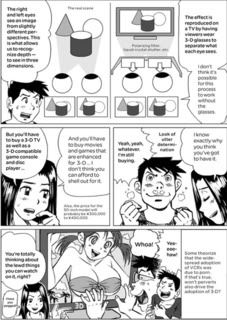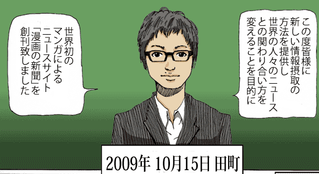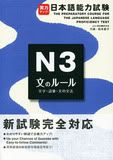June 29, 2010
JLPT 2010 模擬試験(mock exam) ぎおんご・ぎたいご: onomatopoeic
みなさん、こんにちは。
A student who took a mock exam told me that Giongo・Gitaigo (onomatopoeic) in the test.
I know you do not have much time but please see the online dictionary hope it could help you.
Common japanese onomatopoeia word sounds found in manga
Macaronomatopoeia
N2模擬試験を受けた生徒さんからの情報です。
擬音語・擬態語がでたそうです。
あまり時間がないと思いますが、オンラインの辞書を見つけましたので参考にしてください。
- words & phrases -
模擬(もぎ)試験(しけん): mock exam
情報(じょうほう): information
擬音語(ぎおんご)・擬態語(ぎたいご): onomatopoeic
辞書(じしょ): dictionary
参考(さんこう)にする: consult
June 27, 2010
JLPT 2010, July 4th
みなさん、こんにちは!
JLPT (N1, N2 and N3) is on next Sunday.
If you would ask me what effective study methods within a week is, it is very difficult to answer because there is only a week left but I think it would be “Kanji study” .
Kanji is to expand your vocabulary not only for JLPT Kanji test.
Knowing lots of vocabulary helps listening and reading comprehension.
I really understand study Kanji is hard.
I think study Kanji is very systematic, effective and efficient to increase vocabulary comparing English for example.
今度の日曜日はJLPT(N1、N2、N3)のテストですね!
「あと1週間」でできる効果的な勉強はなんですか、と聞かれたら「1週間しかない」のでとても難しいですが、やはり漢字を復習するのがいいでしょう。
漢字の勉強はJLPTの中の「漢字のテスト」のためだけではなく、語彙を増やすためです。
語彙をたくさん知っていると、聴解・読解も楽になります。
漢字の勉強は大変ですが、例えば英語の語彙を増やすのに比べてシステマチックにそして効果的・効率的に勉強できると思います。
- words & phrases -
今度(こんど)の日曜日(にちようび): next Sunday
効果的(こうかてき)な: efficient, economical
勉強(べんきょう): study
聞(き)かれたら: if I was asked
しかない(しか+negative): emphasizing the amount/quantity is very little
難(むずか)しい: difficult
やはり: as was expected
復習(ふくしゅう)する: review
語彙(ごい): vocabulary
増(ふ)やす: increase
聴解(ちょうかい): listening comprehension
読解(どっかい): reading comprehension
楽(らく)になる: it will become easy
大変(たいへん)です: hard
例(たと)えば: for example
~に比(くら)べて: to compare to ~
システマチック: systematic
効率的(こうりつてき): efficient
June 20, 2010
soccer glossary/vocabulary サッカーの日本語(サッカーで使われることば) 2
みなさん、こんにちは!
I did write about soccer glossary/vocabulary in my former entry, but I do not watch soccer at all (sorry).
I usually check the results on the Internet in the morning.
And actually I do not know much about its rules and terms well.
I think it is good for you if you know some Japanese soccer words when you want to talk about the World Cup.
この前のエントリーでサッカーの日本語を書きましたが、私は全然サッカーを見ません。(ごめんなさい)
朝ネットで結果を見るだけです。
そしてサッカーのルールも用語も実はあまりよく知りません。
でもサッカーが好きなみなさんは、サッカーの日本語を知っているとWorld Cupのことを話せるのでいいですよ!
- words & phrases -
この前(まえ): the last time
全然(ぜんぜん): not at all
結果(けっか): result
用語(ようご): terms
実(じつ)は: actually
あまり。。。+Verb Negative: not really
サッカーが好(す)きなみなさん: all of you who love soccer
今日のサッカーの日本語は。。。
コイントス: toss of a coin
表(おもて)か裏(うら)か: Heads or tails?
キックオフ: kick-off
ナイス・シュート!: Nice shot! Good shot!
ヘディング: header
ピッチ: pitch
ヒール・キック: back-heel
オフサイド: offside
ハーフタイム: halftime
ロス・タイム: injury time, additional time
ハンド: handball
ファール: foul
イエローカード: yellow-card
レッドカード: red-card
退場(たいじょう): sending-off
セットプレー: set piece
コーナーキック: corner kick
フリーキック: free kick
スパイク: boots
June 18, 2010
soccer glossary/vocabulary サッカーの日本語(サッカーで使われることば) 1
みなさん、こんにちは!
The World Cup soccer games are being held in South Africa.
There are lots of people who are watching the games on the train at night.
The soccer games are often talked about in my lesson at the school too.
Let’s study some vocabulary related to soccer today.
サッカーワールドカップが南アフリカで行われています。
電車の中で夜、携帯で試合を見ている人がたくさんいます。
私の学校でのレッスンも最近よくサッカーが話題になります。
今日はサッカー関連の語彙を勉強しましょう。
- words & phrases -
南(みなみ)アフリカ: South Africa
行(おこな)われています: being held
電車(でんしゃ)の中(なか)で: on the train
携帯(けいたい)で: with cell phone
試合(しあい): game, match
見(み)ている人(ひと): one who is watching (soccer games)
私(わたし)の学校(がっこう)でのレッスン: my lessons at the school
最近(さいきん): recently,
よく: often
話題(わだい)になる: be talked about
サッカー関連(かんれん): succor related
語彙(ごい): vocabulary, words,
勉強(べんきょう)しましょう: let’s study

sponichi annex
= soccer glossary = (サッカーで使われることば)
試合(しあい): game, match
勝(か)つ: win,
勝利(しょうり): winning
白星(しろぼし): win
負(ま)ける: lose
黒星(くろぼし): lose
逆転(ぎゃくてん)する: turn the game around
先発(せんぱつ)メンバー: first member
引(ひ)き分(わ)け(n)・引き分ける(v): draw
ドロー: draw
先制点(せんせいてん): be first to score
ゴールを決める: get a goal
ネットを揺(ゆ)らす: find the net
パス回(まわ)し: to pass
ハットトリックを決(き)める: score a hat trik
オウンゴール: own goal
シュート: shot
ドリブル: dribble
2対(たい)1: two-one (score)
June 15, 2010
Manga Newspaper 「漫画の新聞」
みなさん、こんにちは!
Japan is newspaper-crazy.
Its biggest daily, Yomiuri Shimbun, has 10 times the circulation of The New York Times.
For now, at least.
Just as in the US, young people in Japan aren’t reading newspapers as often as their parents.
But the Japanese have a solution: Manga No Shimbun (Manga Newspaper), an online outfit that covers the week’s events in comic book form.
These aren’t the funnies or political cartoons—they’re actual news articles about everything from foreign policy to pop culture to murder trials.
The site employs more than 100 manga artists to cover breaking stories, updating 10 or 15 times a day.
Graphic style varies—some pieces are in color, others black-and-white; some are realistic, some exaggeratedly kawaii (cute).
Manga News is also available via iPhone app and will come to Android and other mobile platforms later this year.
There’s even talk of international versions.
Good idea, but what happens if Astro Boy gets elected to parliament?

.co
You can read Manga newspapers!
The numbers of young people who do not read newspapers are continuously growing.
It is a good news for those people!
There is a new site which offers you an online Manga news.
They will also open an English, Korean and other languages versions.
新聞が漫画で読める!
最近新聞を読まない若い人が増えてきました。
そこでマンガのニュースが読めるサイトがオープンしました。
今後英語版や韓国語版なども作るそうです。
- words & phrases -
新聞(しんぶん): newspaper
漫画(まんが): cartoon, comic
読(よ)める: can read
最近(さいきん): these days, recently
若(わか)い人(ひと): young people
増(ふ)えてきました: increasing
そこで: therefore
今後(こんご): in the future
英語(えいご)版(ばん): English version
韓国語(かんこくご): Korean
など: and so on
作(つく)る: to make
~そうです: I heard/read that ~

News release, Manga no Shimbun
この度皆様に新しい情報摂取の方法を提供し世界の人々のニュースとのかかわり合い方を変えることを目的に世界初のマンガによるニュースサイト「漫画の新聞」を創刊いたしました。
We created a world first news site in Manga called “Manga no shimbun (Comic news)” in order to change the ways to involve news to people all over the world and to offer a new ways to take information.
- words & phrases -
この度(たび): for this time
皆様(みなさま): all
情報(じょうほう): information
摂取(せっしゅ)する: to take
方法(ほうほう): methods, means, manners, ways,
提供(ていきょう)する: to offer
世界(せかい)の人々(ひとびと): people around the world
かかわり合(あ)い方(かた): the ways to relate
変(か)える: to change
目的(もくてき): purpose
世界初(せかいはつ)の: the world’s first
創刊(そうかん): be first published
June 13, 2010
New JLPT sample questions are uploaded on the JLPT WebSite
みなさん、こんにちは!
JLPTのWebSiteに新しいJLPTの問題サンプルがアップされていました。
こちらです。http://www.jlpt.jp/j/about/new-jlpt.html
New JLPT sample questions are uploaded on the JLPT WebSite.
Here : http://www.jlpt.jp/e/about/new-jlpt.html
試験問題例(しけんもんだいれい)
Sample Questions
N1|N2|N3|N4|N5
聴解問題(ちょうかいもんだい)音声(おんせい)サンプル
Audio Samples for Listening Section
N1|N2|N3|N4|N5
解答用紙(かいとうようし)
Answer sheets
N1|N2|N3|N4|N5
聴解(ちょうかい)スクリプト
Scripts for Listening Section
N1|N2|N3|N4|N5
正解(せいかい)
Answers
N1|N2|N3|N4|N5
June 6, 2010
新しい方法のJLPTリスニング New JLPT Listening
みなさん、こんにちは!
今日は新しいJLPTのリスニングについて書きます。
今年から新しい方法のリスニングがあります。
I will write about the New JLPT Listening today.
There are some new listening stiles will be started from this year.
①先にある程度まとまった会話などを聞いてから、質問を聞きます。
それから答えを4つ聞いて正しいものを選びます。
例えば(N3レベル)、ホテルにチェックインをするときにフロントの人からベッドメイクや掃除について曜日や時間について言われます。質問はこのお客さんが○○曜日に△△をしたいときにはどうするか、というものです。それから答えを4つ聞きます。
(1) Listen first some dialogue or paragraph then given a question.
Four questions are followed by.
* example(N3 level)
When a customer checks in a hotel, she is told about days and times of bed making and room cleaning at a front desk.
Its question is if this customer wants to ask △△ on ○○day, what she needs to do.
Then listen to the four answers.
②短い文を聞いて、それに対する正しい答えを4つの中から選びます。
例えば(N3レベル)「電車また遅れてるね」を聞いて「また?」などの答えを聞いて選びます。
(2) Listen a short sentence then choose a correct response for it.
* example (N3 level)
First you hear “The train delays.” then listen answers like “not again” .
上の例は「N3聞く」という新しいテキストからです。
学校のレッスンの時①の問題を少し聞きましたが、とても難しかったです。
質問がわかりませんから、全部聞かなければならないからです。
The above examples are from a new textbook “N3 listening comprehension”
I listened the (1) at my school during my class, it was very difficult.
Because you do not know what you are asked prior so you need to listen everything carefully.
メモを書いているとその間聞くことに集中できません。
大切だと思うこと、例えば時間、日にちや物の名前などを早く書く練習をしましょう。
ひらがなよりローマ字の方が早く書けるかもしれません。
質問も4つあるのでメモが必要です。
新しい方法のリスニングを練習用にテキストを買った方がいいかもしれません。
You cannot concentrate on listening while you are taking a note.
Maybe you should practice writeng something quickly, for example, days and time or things names.
You could write faster in Roma-ji rather than Hiragana.
There are four questions so you would also need to write them down.
It would be better to buy some new textbooks which cover the new stiles listening parts.
実はこのテキストのN3レベルは難しすぎると感じました。
Actually I felt this N3 level listening textbook was too difficult.

Tsutaya Online Shop
(not in Amazon yet)
June 5, 2010
"Enter the Void" エンター・ザ・ボイド
みなさん、こんにちは!
A French movie “Enter the Void” is now showing in Japan from May 15th too.
Is this the image of Tokyo that French people have?

Enter the Void
5月15日から日本でも上映されているフランス映画”Enter the Void”.
この映画に出てくる東京はフランス人の持っている東京のイメージなのかな。
Subscribe to:
Posts (Atom)



